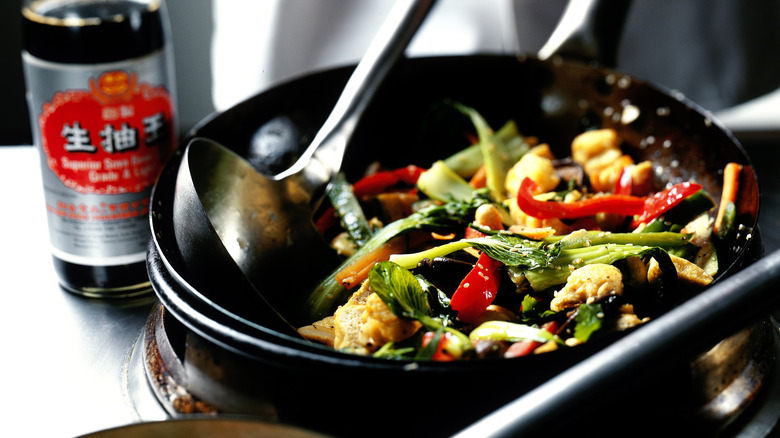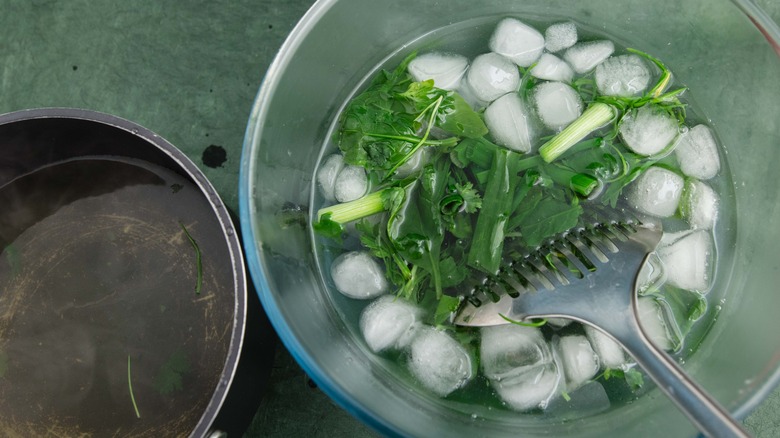Your Stir-Fried Veggies Will Taste Restaurant Quality With One Extra Step
Ever leave a Chinese restaurant and wonder how their food is so perfectly stir-fried, full of lingering flavor and wok hei (or the aromas from the wok)? The veggies are also perfectly crispy, glistening, and not wilted or over cooked. It turns out, as chef Shirley Chung revealed, there's just one extra step to making your stir-fried veggies taste restaurant quality at home. She revealed, "Chinese restaurants, always quickly blanch the vegetables in boiling water or stock first before then stir fry them."
Blanching veggies involves boiling them for a minute or two then quickly removing them from heat to run under cold water or soak in an ice bath. This process flash cooks the veggies and the change in temperature prevents them from overcooking. The result are perfectly cooked veggies that are crisp and somewhat sweeter. While it is possible to blanch vegetables in a microwave, we recommend using boiling water in a saucepan, wok, or pot over stovetop. It is also important to gauge when the veggies are blanched to perfection. For green veggies like broccoli, green beans, and gai lan, they turn a deep, vibrant green.
After blanching veggies, there's an additional tip to note to achieve the perfect stir fry. Chung said, "Keep the flames high, use a cast iron sauté pan if you don't have a wok at home, it is always about the heat control, how to keep it as hot as possible when stir fry."
A hot wok prevents stir fried veggies from becoming soggy
Not keeping the cooking temperature as hot as possible while stir frying is a common mistake almost everyone makes with their wok. When the wok is not hot enough, the food won't stir fry the way it's supposed to. One, the veggies won't sear and get that wok hei flavor as aforementioned, or that desirable restaurant-quality smoky-char taste. Instead of cooking up crisp veggies, the wok will steam the food instead of frying it. Secondly, when you don't preheat the wok and get it hot enough, food will also actually stick to the wok, and this can get messy, especially when you're stir frying the veggies with chicken or starches like rice cake and noodles. Finally, not controlling the heat of the wok can also lead to food that's unevenly cooked.
Now, while adhering to Chung's tips will help ensure your next plate of stir fried veggies taste restaurant quality, we're really just scratching the surface here in regards to stir frying and proper wok usage. For example, a neat next step would be to learn how to toss food in the wok like a pro.

